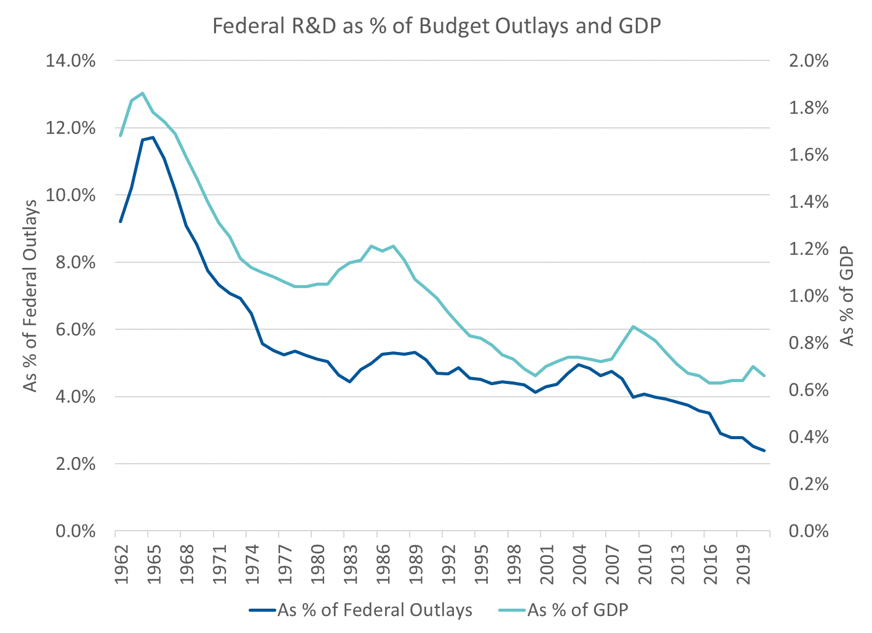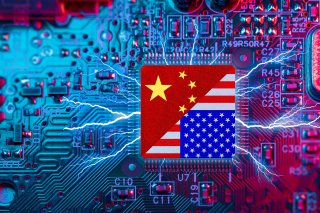Why America Is Losing the Tech War with China
It is simply too late to try to suppress China. The United States must either spend seriously on research and development, along with industrial policy, or it will lose the race for twenty-first-century technological supremacy.
The semiconductor industry is unique in the scale of its R&D requirements. It budgeted $200 billion for R&D on $600 billion in 2021 sales (the actual total will be $160 billion or less due to market softness). No other industry devotes a third of revenue to R&D. The world’s largest industry, automobiles, spends about one-fourteenth of its revenue in R&D. For companies like Qualcomm, which earns a third of its revenue in China, or Nvidia, which earns one-fifth of revenue, the support available under the CHIPS act will not compensate for revenues lost due to federal regulation. These companies are lobbying the Biden administration to relax controls on China, and they have a good case—in fact, the same case the Pentagon made in December 2019.
Restrictions on technology exports to China at best are a stopgap. Eventually, China, which graduates more engineers each year than the rest of the world combined, will develop its own substitutes, as ASML, the world’s premier maker of chip lithography equipment, avers. Even as a stopgap, though, the controls are failing. They impose high costs on China in several ways but have not impeded the Fourth Industrial Revolution. On the contrary: the limited adoption of Fourth Industrial Revolution technologies by American industry is concentrated in firms that have major commitments to China.
Whatever its merits, the CHIPS Act is not a substitute for the kind of effort the United States made under the Apollo program, or during the late 1970s and early 1980s, when DARPA funded the invention of the digital economy. In 1983 the United States devoted 1.2 percent of GDP and 5 percent of the U.S. budget to federal R&D. Today we spend only 0.6 percent of GDP on federal R&D and barely 2 percent of the federal budget.

To maintain a technological edge over China, we will have to spend an additional several hundred billions of dollars, train a highly-skilled workforce, educate or import more scientists and engineers, and provide broader incentives to manufacturing. It is simply too late to try to suppress China. That is no longer within our power. What remains within our power is to restore American pre-eminence.
David P. Goldman is Deputy Editor of Asia Times and a Washington Fellow of the Claremont Institute. He is the author of You Will Be Assimilated: China’s Plan to Sino-Form the World, How America Can Lose the Fourth Industrial Revolution, and Restoring American Manufacturing: A Practical Guide.
Image: Shutterstock.

